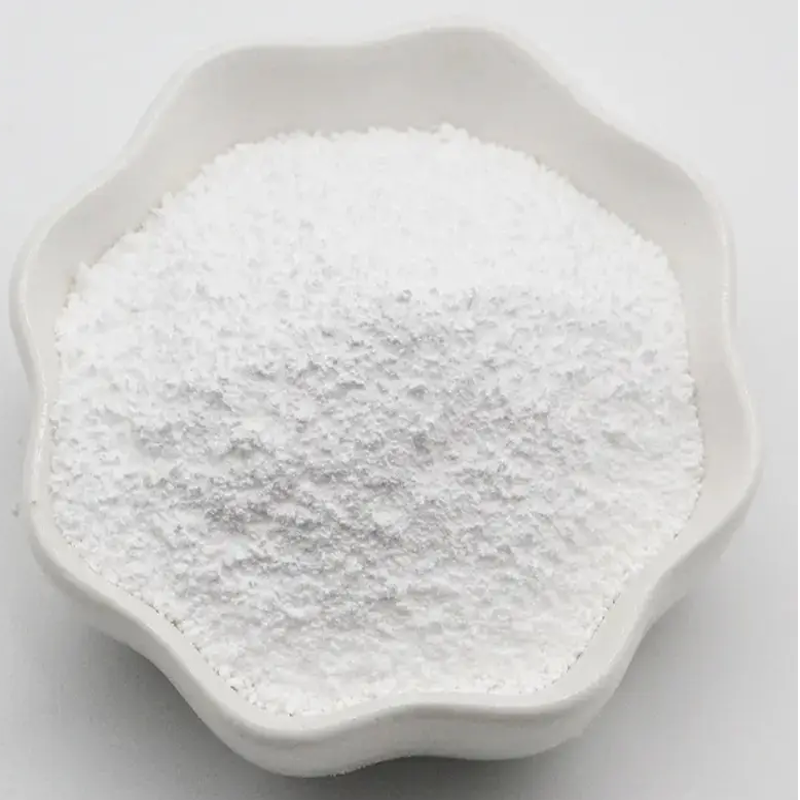-
Categories
-
Pharmaceutical Intermediates
-
Active Pharmaceutical Ingredients
-
Food Additives
- Industrial Coatings
- Agrochemicals
- Dyes and Pigments
- Surfactant
- Flavors and Fragrances
- Chemical Reagents
- Catalyst and Auxiliary
- Natural Products
- Inorganic Chemistry
-
Organic Chemistry
-
Biochemical Engineering
- Analytical Chemistry
- Cosmetic Ingredient
-
Pharmaceutical Intermediates
Promotion
ECHEMI Mall
Wholesale
Weekly Price
Exhibition
News
-
Trade Service
Post-COVID syndrome or Long COVID will be the next major health challenge facing the world
.
When most people's eyes are focused on the current confirmed cases and deaths, using these indicators to measure the impact of the new crown on human health, and focusing policy on preventing infection and death (this is indeed a pressing matter), Are we ignoring the long-term impact of Covid-19 on our entire population in the debate over the economic toll of lockdown policies
?
According to WHO's definition of COVID-19 sequelae: a series of symptoms that appear 3 months or more after probable or confirmed new crown infection, last for at least 2 months, cannot be explained by other diagnoses, affect daily functioning, and May fluctuate or recur over time
.
Healthy people may be asymptomatic or recover within months of developing symptoms, but may also develop long-term Covid-19; others are at increased risk of stroke and diabetes after infection; patients admitted to intensive care units Damage to the brain, heart or lungs may be difficult for people who have been treated for several weeks to return to their previous state of health
.
Note: The impact of new crown infection on people of different ages, in young people, it reduces the quality of life, infected people may recover after a few months, or they may live in weakness for a long time, the new crown is severe It can even lead to shortened life expectancy and premature death of the elderly
.
A recent study by Imperial College London surveyed more than 600,000 British community populations by random sampling to count the prevalence of nationally representative new crown sequelae in the population and the mainstream sequelae.
Symptoms and assessment of risk factors leading to sequelae are expected to provide more information for clinicians and the public
.
The study was published April 12 in Nature Communications
.
The sample data for the study came from REACT-2, a national survey on the serological prevalence of new crown antibodies in the United Kingdom, with samples from rounds 3 to 5 (covering 508,707 people, time span from September 2020 to February 2021) as the main Analysis cohort, round 6 samples (covering 97,727 persons, May 2021) served as repeat cohorts
.
The Community Transmission Real-Time Assessment Programme-2 (REACT-2) aims to assess the cumulative community seroprevalence of SARS-CoV-2 IgG antibodies in the UK, and the seroepidemiological survey aims to detect antibody levels in serum to SARS-CoV-2 The previous infection status of the virus; the purpose of large-scale nucleic acid screening in the population (REACT-1) is to use PCR methods to detect nucleic acid fragments of the new coronavirus, and to search for existing virus infections
.
Among the 92,116 COVID-19 antibody-positive individuals in the main analysis cohort, 37.
7% still had more than one symptom and 17.
5% still had more than three symptoms after the 12th week of the first symptom onset
.
In the entire British population, it is equivalent to that between September 2020 and February the following year, 5.
8% (more than 2 million people) of adults in the UK experienced more than one new crown sequelae, 2.
2% (about 1 million people) ) are experiencing more than 3 COVID-19 sequelae
.
Legend: Changes in the sequelae of the new crown over time: Symptoms decreased rapidly in the 4th week, and a small inflection point in the 12th week, after which the rate of reduction slowed down, and some people’s symptoms continued for half a year or even longer and repeated In the cohort, 21.
6% of the new crown antibody positive people reported that they still had more than 1 symptom 12 weeks after the first symptoms appeared, and 11.
9% had more than 3 symptoms, that is, in May 2021.
In the UK, 3.
1% and 1.
6% of adults, respectively, were experiencing 1 or more Covid-19 sequelae
.
The explanation given by the researchers for the difference between the main analysis cohort and the repeat cohort is because of the wide variety of symptoms, some of which are more common in everyday life, plus participant recall bias, and the impact of lockdown policies on participation The influence of the self-perception of the participants will cause differences in the reporting of new crown sequelae between the two cohorts
.
Nonetheless, only about 3% of people without Covid-19 reported having symptoms lasting more than 11 days, meaning that some symptoms of Covid-19 sequelae would appear in up to 3% of Covid-19 patients by week 12.
Among the people with new crown infection, this proportion can reach 37.
7%, which is about 10 times that of the former, indicating that these sequelae are real and significant in new crown infected patients
.
(The data of people who are not infected with the new crown comes from the nucleic acid test negative samples in REACT-1)
.
Next, the researchers tried to use the method of cluster analysis to find the mainstream new crown sequelae in the population.
The results showed that there were two main types of new crown sequelae in the main analysis cohort, and the main symptoms of group 1 (Cluster L1, n=15799) Fatigue, with muscle aches, trouble sleeping, and shortness of breath
.
Group 2 (Cluster L2, n=4441) was mainly characterized by respiratory symptoms, manifested as shortness of breath, chest tightness and chest pain
.
It is worth noting that compared with group 1, participants in group 2 had a higher proportion of severe symptoms in the acute phase of the new crown (Cluster L2 43.
5% vs.
Cluster L1 27.
4%), and the hospitalization rate was even about 3 times that of the former.
(Cluster L2 2.
9% vs.
Cluster L1 1.
1%), conversely, those who were hospitalized with severe symptoms during infection were more likely to have respiratory-related sequelae after discharge
.
Finally, the researchers also analyzed the impact of various factors on the risk of new coronary sequelae, including age, gender, BMI, smoking, hospitalization, income, whether you are in the medical industry, ethnicity, etc.
.
The results showed that being female, increasing age, being overweight and obese, smoking or vaping, being hospitalized for COVID-19, and working in healthcare were all associated with an increased risk of COVID-19 sequelae
.
The risk of women suffering from more than one sequelae is 1.
38 times that of men.
Age is also the main risk factor for the sequelae of the new crown.
As age increases, the probability of the sequelae of the new crown increases linearly.
8 percentage points higher
.
People hospitalized with Covid-19 had a 3.
45 times higher risk of developing Covid-19 sequelae than non-hospitalized people, although, surprisingly, Asians had a 16% lower risk of Covid-19 sequelae than Caucasians (OR: 0.
84 [0.
74, 0.
96])
.
In general, through this large nationwide community study on the sequelae of COVID-19 among people over 18 years old in the United Kingdom, the proportion of British adults with sequelae of COVID-19 within a certain period of time is known.
According to this proportion, it can be seen that in The number of people in the UK suffering from the aftermath of the new crown is very large
.
Older people, female groups, and the economically disadvantaged are at greater risk of COVID-19 sequelae, and access to care and treatment for these groups will be a major challenge for the health service system if there are many people in this society How can we maintain normal production and life in the sub-health state of the sequelae of the new crown for a long time
?
We must also take into account the lasting health effects when measuring the toll of Covid-19, otherwise we will only see, understand and respond to the problems of the present, while ignoring the difficulties of the future
.
Reference [1] Whitaker, M.
, Elliott, J.
, Chadeau-Hyam, M.
et al.
Persistent COVID-19 symptoms in a community study of 606,434 people in England.
Nat Commun 13, 1957 (2022).
https: //doi.
org/10.
1038/s41467-022-29521-z[2]Ward, H.
, Flower, B.
, Garcia, PJ, Ong, S.
, Altmann, DM, Delaney, B.
, Smith, N.
, Elliott, P.
, & Cooke, G.
(2021).
Global surveillance, research, and collaboration needed to improve understanding and management of long COVID.
Lancet (London, England), 398(10316), 2057–2059.
https: https://doi.
org/10.
1016/S0140-6736(21)02444-2[3]Briggs A, Vassall A.
Count the cost of disability caused by COVID-19.
Nature.
2021;593(7860):502-505.
doi:10.
1038/d41586-021-01392-2[4] Riley, S.
, Atchison, C.
, Ashby, D.
, Donnelly, CA, Barclay, W.
, Cooke, GS, Ward, H.
, Darzi, A .
, Elliott, P.
, & REACT study group (2021).
REal-time Assessment of Community Transmission (REACT) of SARS-CoV-2 virus: Study protocol.
Wellcome Open Research, 5, 200.
https://doi.
org/10.
12688/wellcomeopenres.
16228.
2 Written | Edited by 457 | Swagpp Click "Read the original text" below to download the Mace Medical APP







